Intriguing Ant Behaviors
Intriguing Ant Behaviors
The Oddities of Ants
Ants are extremely unique and fascinating creatures. They operate within vast populations and strategically work as a unit for the best interests of their colony. With such complex societies, these creatures are bound to also have their own collection of unique and surprising behaviors. 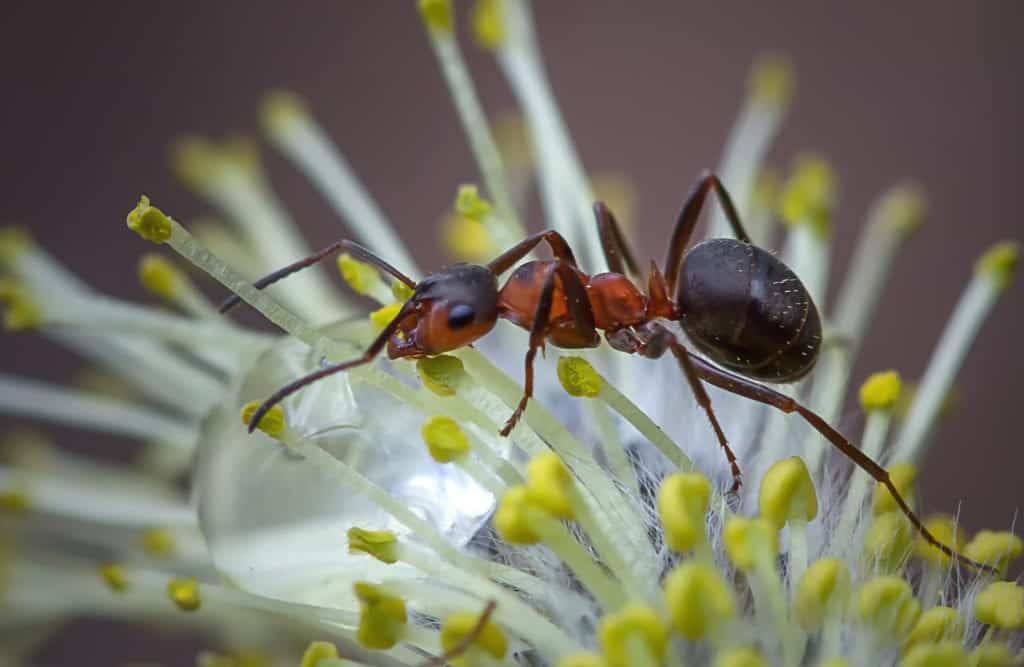
Ants Have Bathrooms
This isn’t to say that these insects have constructed porcelain thrones, rather, within their colonies, these ants have created designated areas to relieve themselves. This interesting behavior was studied by a team of scientists that discovered these “well-defined fecal patches.” The fed the ants food dye in a sugar solution and after a period of roughly 60 days, they observed the area to find the colored excrements. To their surprise, the colored droppings were very clearly accumulated in specific areas within the nest. What was even more amazing was the fact that these areas were not waste dump areas in general. That is to say they did not contain other discarded items such as uneaten food, ant corpses, etc. Rather, these areas were clearly their versions of a restroom. 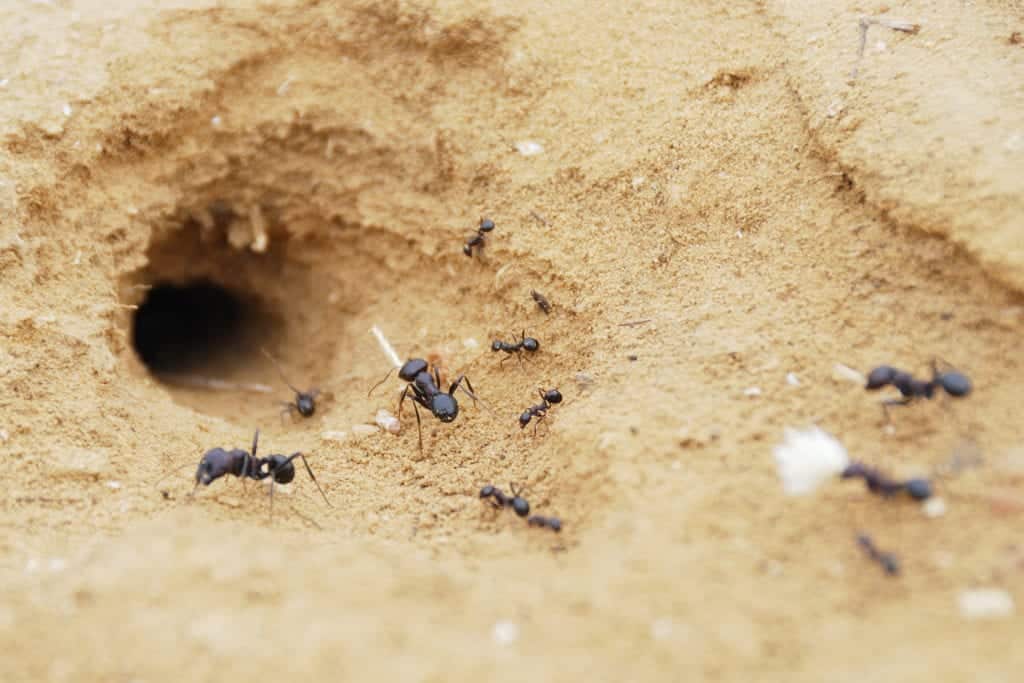
Giddy-up!
Ironically, the Lone Star State happens to be the location of an “ant rodeo.” Entomologists Alex Wild and Jen Schlauch of the University of Texas at Austin studied this unique habit of some species of ants riding on the backs of other larger ants. Common to the cowboy trope, these ants appear to “ride solo” and live without colonies. Alex Wild developed the term “rodeo ants” to describe these hitchhiking insects and also notes that these riders do more than use the legs of their “mounts,” they mooched off their food and other resources as well. Based on this, these ants can be fairly called a “parasite on the food and labor of [their] host.” 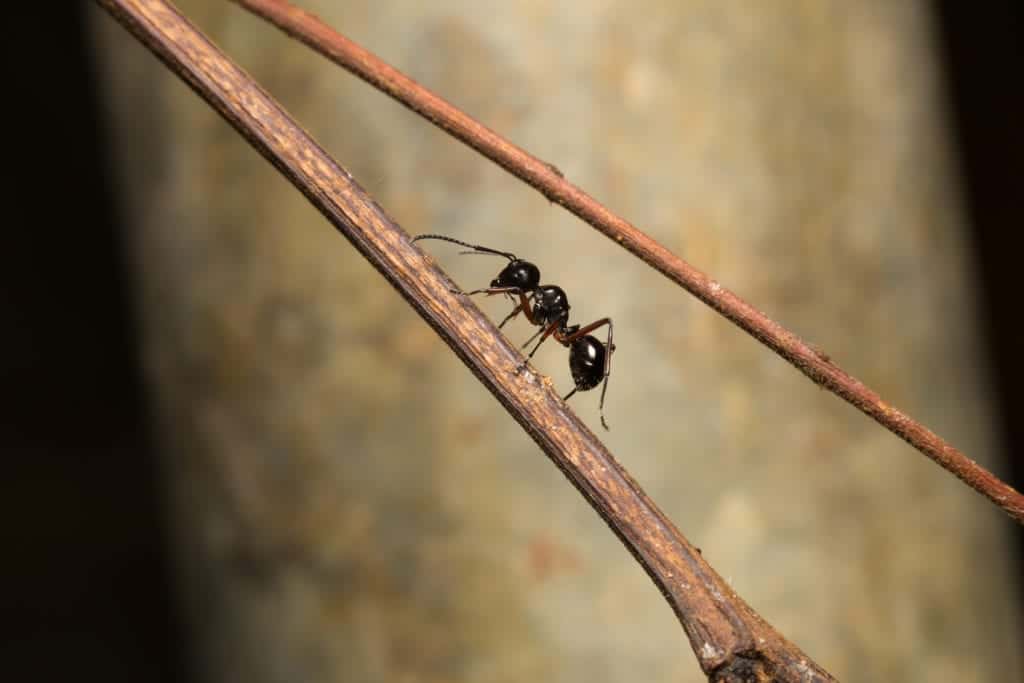
Ant Paramedics
Surprisingly, in the aftermath of a vicious encounter with termites or other ant colonies, the African Matabele ants will attend to their injured, like medics on a battlefield. The badly injured ants secrete a specific pheromone alerting their fellow colony members that they need help. When help arrives, the assisting ants quickly determine whether the injured ant is treatable, or too badly wounded to be able to help. Those that are treatable are carried back to the colony. Once they’ve returned, the rescuer ants “lick” the wounds, effectively cleaning the area. Scientists found that injured ants that did not receive this treatment from their colony members actually had an 80% chance of succumbing to their wounds within a few hours whereas those who were treated only have a 10% chance of passing away from their injuries. Following the healing process, these previously wounded ants can actually continue to function within their colony even missing limbs. 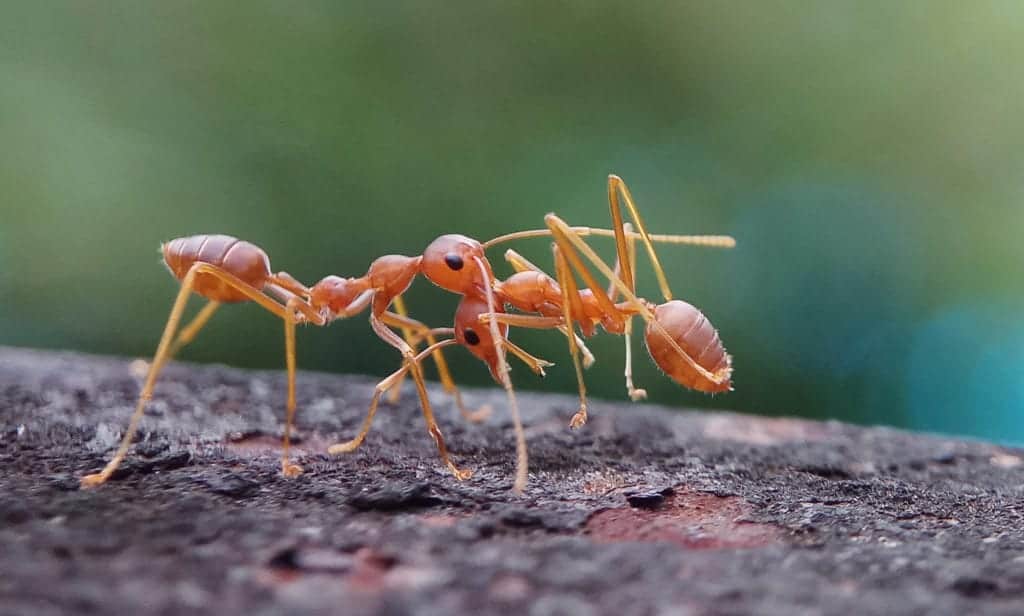
Rainbow Ants
Dr. Mohamed Babu noticed a curious phenomenon with a species of ants local to Mysore, South India. Their abdomens are somewhat thin making their exoskeletons transparent and allowing the color of their meals to be visible on their bodies. With a simple experiment using sugar water and food coloring, Dr. Babu managed to create a rainbow of ants in his own backyard with some stunning pictures to capture the marvel. 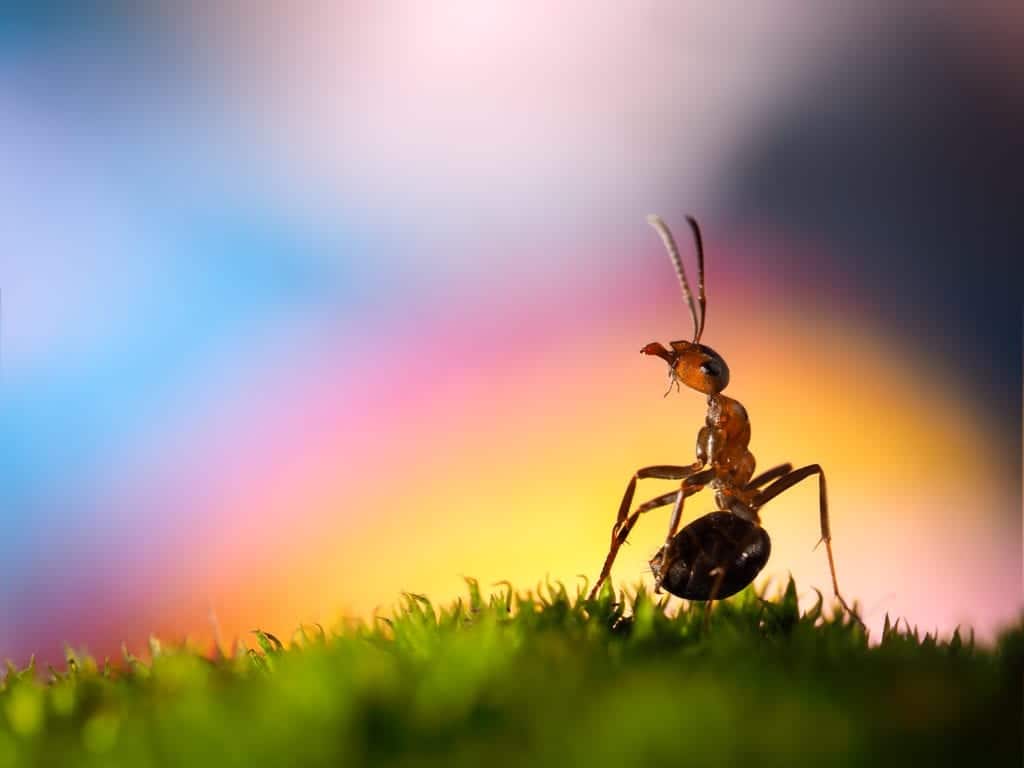
Ant’s Socially Distance
Ants are very social creatures, and due to their close proximity with other members of their colony, they are constantly at risk of contracting and spreading contagions throughout their population. Surprisingly, part of ant culture actually includes consideration for cleanliness in order to prevent disease (although their actions are most likely fueled by instinct rather than active consideration of cause and effect). A study at the University of Lausanne in Switzerland released their findings about this phenomenon within ant culture. Similar to humans, when sick with a little “ant cold,” the ants will stay away from their fellow colony-members and heal before returning to work. In the experiment, when infected foraging ants returned to their colony, they made an active effort to distance themselves from the rest of the population. In addition, healthy forager ants who had not been exposed to the infection increased their time spent in solitude away from the colony. Meanwhile, the nurse ants, who take care of the young in a colony, moved the eggs and babies further into the depths of the colony’s maze – isolating themselves from exposure to any of the roaming forager ants. So, as it turns out, ants take sick days and reorganize their societies to “flatten the curve” and reduce the spread of disease.
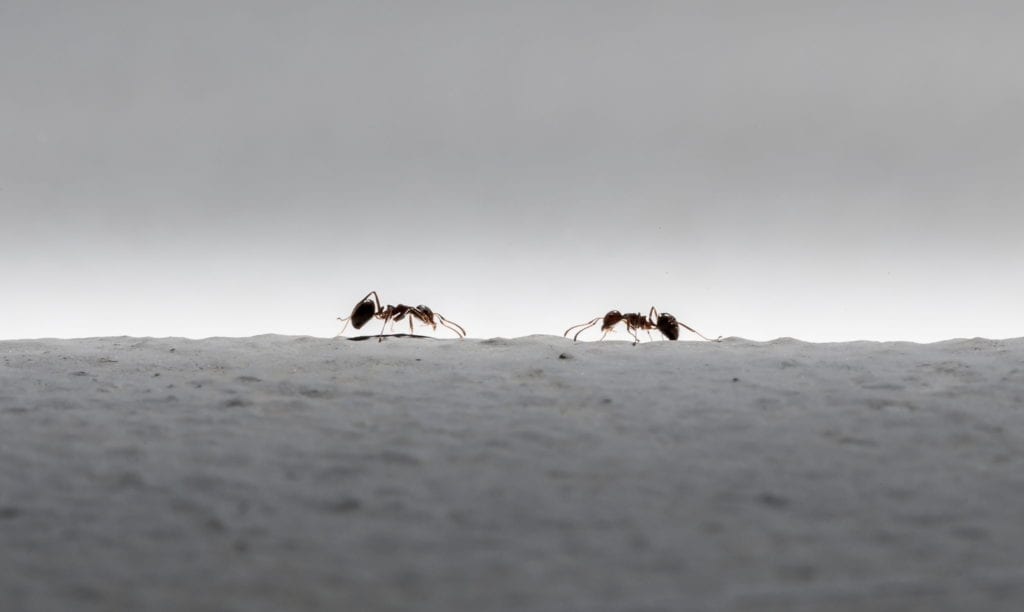
Ant’s Don’t Get Stuck in Traffic
At a first glance, hordes of ants may seem rather disorganized and perhaps like they are moving at random, this is actually not the case. When examined in depth scientists confirmed that ants formed lanes as they move about, and continuously adjust their movements in order to avoid blockages and continue the flow of movement. Typically, “ant highways” are divided into three lanes. While some ants are heading back to the colony with food and provisions, others are heading out to forage. Those that are homeward bound are often carrying loads, making it more difficult to maneuver. As such, if two ants are headed for collision, the one not burdened with items veers left or right, allowing the returning ant to take the center lane. This happens on repeat, forming a center lane of returning ants and two bordering lanes of ants leaving. As a whole, this is a case of individuals relatively mindlessly contributing to the flow of a mass pattern, which is made possible by their cooperative genetic programing and ultimately prevents them from getting trapped in traffic.
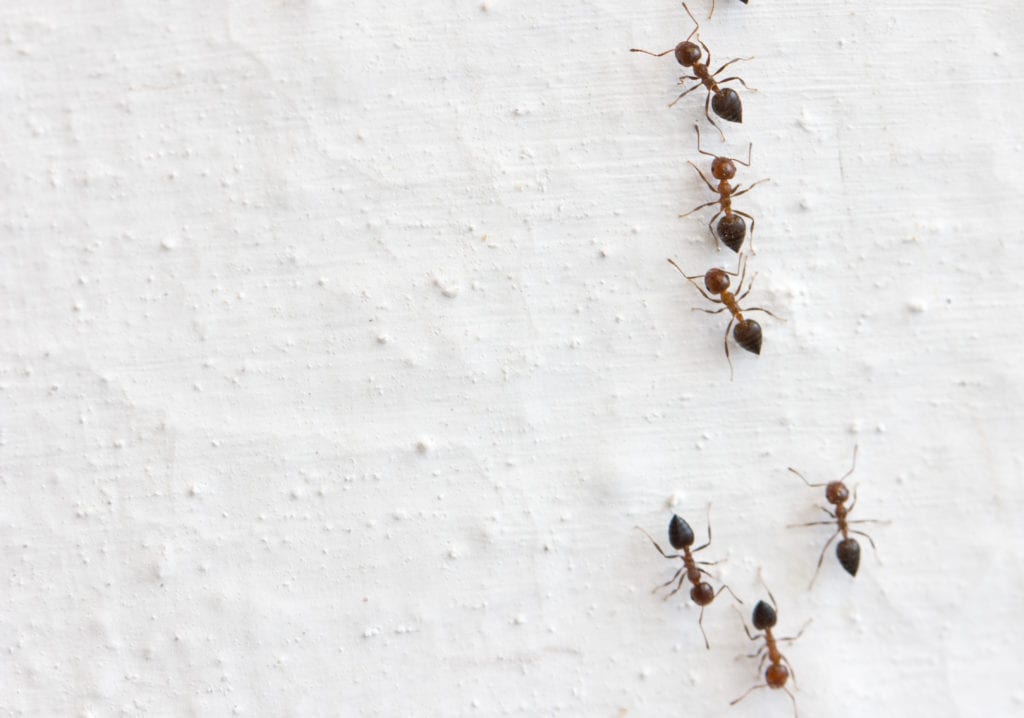
Citations
Clark, L. (2015) Ants Have Designated Toilet Areas in Their Nests, Smithsonian Magazine. Smithsonian Institution. Available at: https://www.smithsonianmag.com/smart-news/ants-do-their-business-colony-shared-toilets-180954354/ (Accessed: February 5, 2021).
Hanson, Ph. D., J. (2016) Why Don’t Ants Get Stuck in Traffic?, YouTube. It’s Okay to Be Smart – PBS Digital Studios. Available at: https://www.youtube.com/watch?v=kkiuw0HbRq4 (Accessed: December 2020).
Katz, B. (2018) Ants Take Sick Days Too, Smithsonian Magazine. SmartNews. Available at: https://www.smithsonianmag.com/smart-news/ants-take-sick-days-too-180970881/ (Accessed: April 2020).
Stromberg, J. (2012) These Rainbow-colored Transparent Ants Are What They Eat, Smithsonian Magazine. Smithsonian Institution. Available at: https://www.smithsonianmag.com/science-nature/these-rainbow-colored-transparent-ants-are-what-they-eat-25521112/ (Accessed: February 5, 2021).
These Ant Paramedics Save Their Injured Comrades (2018) YouTube. SciShow. Available at: https://www.youtube.com/watch?v=Y_lf6NksxFl&list=PLB3FCEEAC84884760&index=225 (Accessed: May 2020).
Wu, K. J. (2019) Texan ‘Rodeo Ants’ Ride on the Backs of Bigger Ants, Smithsonian Magazine. Smithsonian Institution. Available at: https://www.smithsonianmag.com/smart-news/texan-rodeo-ants-ride-backs-bigger-ants-180973788/ (Accessed: February 5, 2021).
Request a Free Quote Today
(We do not share your data with anybody, and only use it for its intended purpose)
